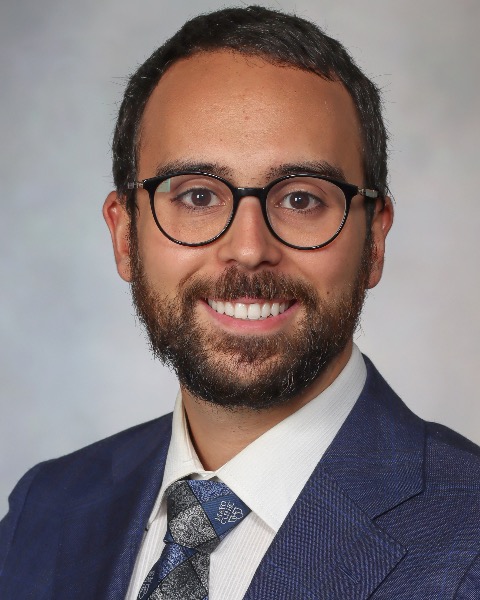Spine
Awake MIS-TLIF under Spinal Anesthesia: Screw Placement Accuracy and 1-year follow-up
Awake MIS-TLIF Under Spinal Anesthesia: Screw Placement Accuracy and 1-year Follow-up

Gaetano De Biase, MD
Neurosurgery Resident
Mayo Clinic Florida
Jacksonville, FL, US
Presenting Author(s)
Introduction: Awake spine surgery under spinal anesthesia has garnered attention due to its potential to reduce patient morbidity and enhance surgical outcomes by minimizing the potential complications associated with general anesthesia. We assessed the accuracy of pedicle screws placed during awake minimally invasive transforaminal lumbar interbody fusion (MIS-TLIF) under spinal anesthesia and analyzed outcomes at the one-year follow-up.
Methods: We included patients that underwent awake MIS-TLIF under spinal anesthesia at an academic center from February 2020 to February 2022. To evaluate the accuracy of pedicle screw placement, a neurosurgery resident (G.D.) and a spine-fellowship trained neurosurgeon (K.A.I.) reviewed the postoperative CT scans and independently scored each pedicle screw for accuracy utilizing the Gertzbein-Robbins classification.
Results: A total of 100 pedicle screws were inserted in 24 patients, with the most common level being L4-5. Median age was 63.5±16.5 (IQR) years, 42% male, median BMI 28±6 kg/m², and median American Society of Anesthesiology class was 2±1. Two patients underwent a two-level fusion, and 22 patients underwent a one-level fusion. Median estimated blood loss was 35±25 ml, median length of stay was 01 days, with 54% of patients going home on the day of surgery, and the only intraoperative complication was one durotomy. Median procedure time was 112±23.5 minutes, and median operating room time (including the spinal block) was 159.5±32.7 minutes; 67% of the screws were placed with navigation, and 33% were robotic-assisted (Mazor X); 99% of the screws were Gertzbein Robins grade A, and 1% Grade E. At the one-year follow-up, the CT scans showed no evidence of pseudarthrosis, and all patients reported improvement of their presenting symptoms.
Conclusion : Our study shows a high accuracy (99%) of pedicle screw placement in awake minimally invasive transforaminal lumbar interbody fusion (MIS-TLIF) under spinal anesthesia, and significant improvement of their symptoms at the one-year follow-up.
Methods: We included patients that underwent awake MIS-TLIF under spinal anesthesia at an academic center from February 2020 to February 2022. To evaluate the accuracy of pedicle screw placement, a neurosurgery resident (G.D.) and a spine-fellowship trained neurosurgeon (K.A.I.) reviewed the postoperative CT scans and independently scored each pedicle screw for accuracy utilizing the Gertzbein-Robbins classification.
Results: A total of 100 pedicle screws were inserted in 24 patients, with the most common level being L4-5. Median age was 63.5±16.5 (IQR) years, 42% male, median BMI 28±6 kg/m², and median American Society of Anesthesiology class was 2±1. Two patients underwent a two-level fusion, and 22 patients underwent a one-level fusion. Median estimated blood loss was 35±25 ml, median length of stay was 01 days, with 54% of patients going home on the day of surgery, and the only intraoperative complication was one durotomy. Median procedure time was 112±23.5 minutes, and median operating room time (including the spinal block) was 159.5±32.7 minutes; 67% of the screws were placed with navigation, and 33% were robotic-assisted (Mazor X); 99% of the screws were Gertzbein Robins grade A, and 1% Grade E. At the one-year follow-up, the CT scans showed no evidence of pseudarthrosis, and all patients reported improvement of their presenting symptoms.
Conclusion : Our study shows a high accuracy (99%) of pedicle screw placement in awake minimally invasive transforaminal lumbar interbody fusion (MIS-TLIF) under spinal anesthesia, and significant improvement of their symptoms at the one-year follow-up.

.jpg)